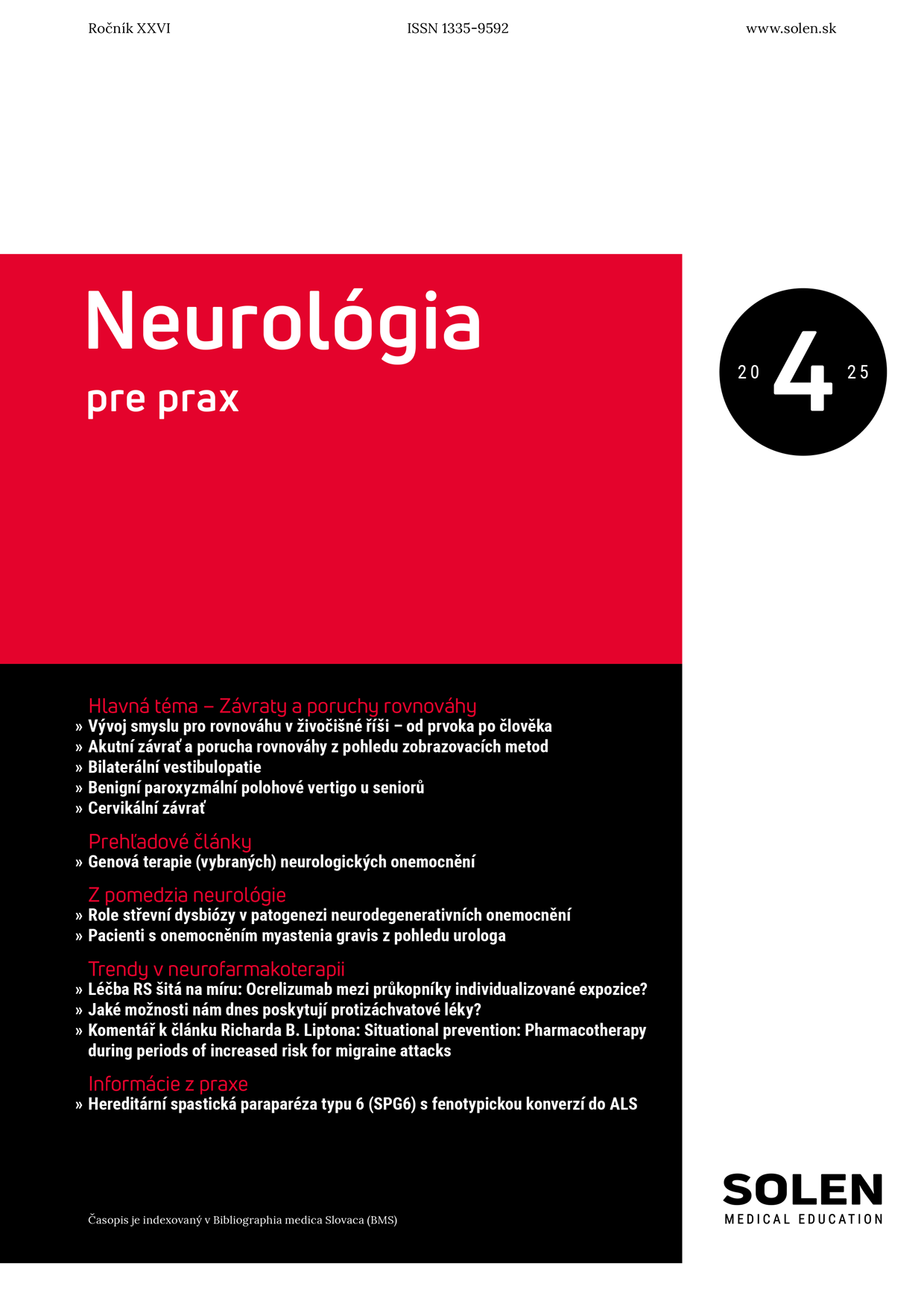Vaskulárna medicína 1/2017
Prierezové údaje Národného registra trombofilných stavov Slovenskej republiky
MUDr. Lucia Stančiaková, MUDr. Miroslava Dobrotová, PhD., MUDr. Pavol Hollý, PhD., MUDr. Ivana Plameňová, PhD., MUDr. Tomáš Šimurda, RNDr. Jela Ivanková, Kvetoslava Kulichová
Trombóza alebo tromboembolická choroba je stav súvisiaci s vytvorením krvnej zrazeniny v cievnom systéme. Na jej vzniku sa podľa Wirchovovej teórie okrem poškodenia cievnej steny a spomalenia toku krvi podieľajú aj zmeny v zložení krvi vrátane vrodených a získaných trombogénnych porúch hemostázy. Trombofilný stav je teda charakterizovaný zvýšenou tendenciou k tvorbe intravaskulárnych artériových alebo venóznych trombov. Úlohou Národného centra hemostázy a trombózy (NCHT) so sídlom na Klinike hematológie a transfuziológie Jesseniovej lekárskej fakulty Univerzity Komenského a Univerzitnej nemocnice Martin je podľa koncepcie zdravotnej starostlivosti v odbore Hematológia a transfuziológia, uverejnenej vo Vestníku Ministerstva zdravotníctva Slovenskej republiky (osobitné vydanie, 31. 8. 2006, ročník 54) okrem komplexnej starostlivosti o pacientov s poruchami hemostázy, aj správa Národného registra trombofilných stavov Slovenskej republiky (NRTS SR). Uvedený jedinečný register zhromažďuje údaje o jedincoch s trombofilným stavom, poskytované odborníkmi z regionálnych hematologických ambulancií so súhlasom pacienta vo forme špeciálneho jednoduchého formulára jedenkrát ročne. Keďže údaje je po ich zaznamenaní v elektronickom systéme možné štatisticky spracovať a posúdiť jednotlivé charakteristiky pacientov, v tomto článku predkladáme prierezovú analýzu vzniknutú v dôsledku každoročného spracovávania informácií o jedincoch s trombofilným stavom. Týmto spôsobom by sme chceli poukázať na význam diagnostiky trombofilných stavov pre ďalší manažment pacientov a stručne charakterizovať riziko, ktoré so sebou prinášajú.
Kľúčové slová: trombofilný stav, trombóza, rizikový faktor, predispozícia
National registry of thrombophilic states in Slovak Republic
Thrombosis or thromboembolic disease is a state associated with the development of blood clot (thrombus) in the vascular system. According to the Wirchov´s triad, except the damage to the vessel wall and slowing of the blood flow, changes in the contents of blood including inherited and acquired prothrombotic disorders of haemostasis also influence its development. Thrombophilia is the state characterized by the increased tendency to form the intravascular arterial or venous thrombus. According to the concept of healthcare in the field of Haematology and Transfusiology, published in the Journal of Ministry of Health of the Slovak Republic (special issue, 31.8.2006, volume 54), besides the complex care of patients with disorders of haemostasis, the role of the National Centre of Haemostasis and Thrombosis (NCHT) with the seat at the Department of Haematology and Transfusiology of the Comenius University in Bratislava, Jessenius Faculty of Medicine in Martin and Martin University Hospital, in the maintenance of the National Registry of Thrombophilic States of the Slovak Republic (NRTS SR) is declared. This unique registry collects data of individuals with thrombophilia, provided by the experts from regional haematologic outpatient departments with consent of the patient once a year in the special simple forms. After their registration in the electronic system, the data are available for the statistical analysis and assessment of particular characteristics of the patients. Therefore, in this article we report the cross-sectional analysis performed during the annual processing of data of the individuals with thrombophilic state. We would also like to point out to the significance of the diagnostics of thrombophilia for further management of the affected patients and briefly characterize the risk that they convey.
Keywords: thrombophilia, thrombosis, risk factor, predisposition

















